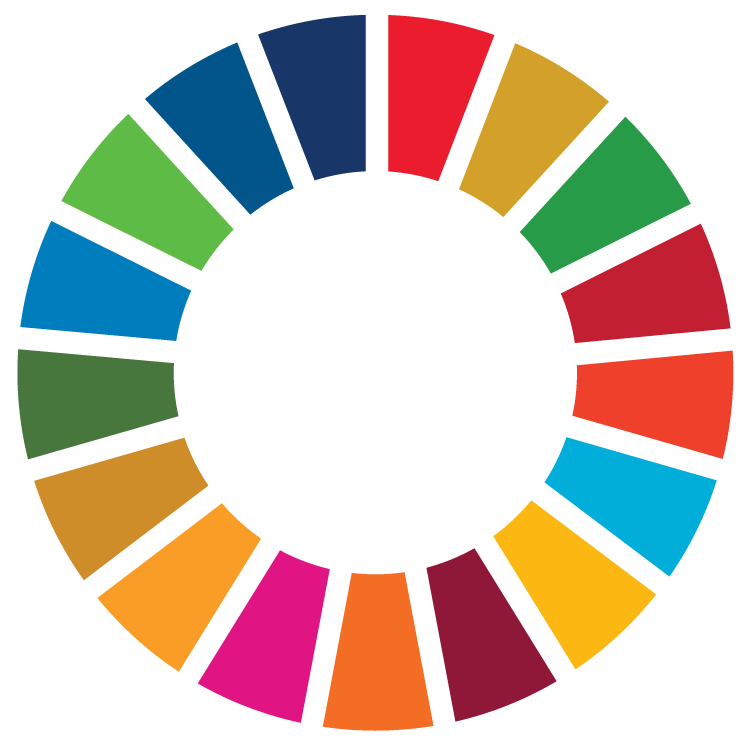Text traduït
Aquesta assignatura s'imparteix en anglès. El pla docent en català és una traducció de l'anglès.
La traducció al català està actualitzada i és equivalent a l'original.
Si ho prefereixes, consulta la traducció!
Texto traducido
Esta asignatura se imparte en inglés. El plan docente en español es una traducción del inglés.
La traducción al español está actualizada y es equivalente al original.
Si lo prefieres, ¡consulta la traducción!
Original text
This subject is taught in English. The course guide was originally written in English.
Course
Journalism
Subject
Social Journalism
Type
Optional (OP)
Credits
6.0
Semester
2nd
| Group | Language of instruction | Teachers |
|---|---|---|
| G21, classroom instruction, mornings | English | Montserrat Corrius Gimbert |
Sustainable Development Goals (SDG)

- 5. Gender equality
Objectives
The objectives of the Social Journalism course are, on the one hand, to enable students to describe and interpret news which are related to society; and on the other hand, to make it possible for students to tell stories using a variety of elements (primarily words, sounds and photos) about topics related to social life or society in general (travel, immigration, NGOs, courts and the legal system, gossip, health, education, environment, religion). Thus, the course is designed to provide students the basic skills to report and write on social topics and to enable them to perform as social journalists through researching and reporting on stories related to society.
Learning outcomes
- Communicate information, ideas, arguments, comments or opinions in an orderly, clear fashion before specialist and lay audiences, bearing in mind linguistic, social, cultural and gender diversity.
- Interpret relevant data to support judgements or arguments, through reflection on socioeconomic, political, cultural or scientific issues, taking into account linguistic, social and gender diversity.
- Use appropriate knowledge and methods for planning and running projects with suitable time management, decision making and problem solving.
- Master written, oral, audiovisual, graphic, hypertextual and multimedia languages in order to present information in an effective journalistic form, in Catalan, Spanish and English, adapting to the medium and audience.
- Apply professional ethics, deontology and the legal framework of journalism to decision-making in complex situations, in academic and professional contexts, with respect for linguistic, social, cultural and gender diversity.
- Apply the theoretical, narrative and technological principles of audiovisual media in order to successfully carry out production processes.
- Make appropriate use of the theoretical, narrative and technological principles of digital communication and cyberjournalism to communicate efficiently in journalism or communication projects on a variety of digital platforms.
Content
- Introduction. Social journalism within the communication media. Delimitation and scope of social journalism. Levels of specialised communication and description of civil society
- Social journalism and its diffuse borders with other journalism areas. The process of news building and the different perspectives depending on the journalist's specialisation
- Genres in the Social Journalism domain. From a brief piece of information to an in-depth report. The article as a fusion between journalism and literature. Opinion genres in society news
- Traditional sources of information: public and private institutions, NGOs and press offices. Emerging sources: social media and digital networks
- Domains of specialisation within social journalism: events, community, children, education, health, environment, immigration, travel, celebrities, science and technology, history, cooking, etc.
Evaluation
The quality of the student's work will be judged by continuous assessment. The final mark will be the result of the following pieces of work:
- Classroom work during each week. It can be a reading comment, a short oral presentation of a topic or question for discussion, information searches, etc. (30% of the final mark).
- A written or audiovisual report in groups of up to 4 students about immigration or any social issue. The students should do some field work, talk to people involved in the topic, take pictures or record images, etc. (40%).
- Press clipping and presentation (20%). Students will have to prepare a press clipping of one of the topics studied in the Social Journalism course (immigration and refugees, NGOs, travel and celebrities) and deliver an oral presentation on the press clipping.
- Attendance (10%). If a student attends a minimum of 80% of the lessons, s/he will get 1 point out of ten. If the student attends between 70 and 79% of the lessons s/he will get half a point. If the student attends less than 70% of the lessons s/he won't get any points for attendance.
Methodology
The objectives cannot be achieved or met through a single lesson. Students, through a variety of developmental learning experiences, will gradually grow toward the achievement of the basic objectives of social journalism.
The course is strongly oriented towards the practice of social journalism but it also covers the theoretical descriptions and explanations needed to acquire the necessary basic concepts the social journalist deals with.
The course provides the student with a theoretical background (given by either teacher's lectures or talks given by professionals invited to some of the course sessions). Practical sessions complement the theoretical parts and may consist of group-discussions, role-playing, interviewing practice, reading, analysing or producing journalistic pieces, etc.
Bibliography
Key references
- Holmes, Tim; Hadwin, Sarah & Mottershead, Glin (2014). The 21st Century Journalism Handbook: Essential Skills for the Modern Journalist. Routledge.
- Hudson, Gary & Rowlands, Sarah (2007). The broadcast Journalism Handbook. Pearson Education Limited.
Further reading
Teachers will provide complementary bibliography and compulsory reading throughout the course via the Virtual Campus.